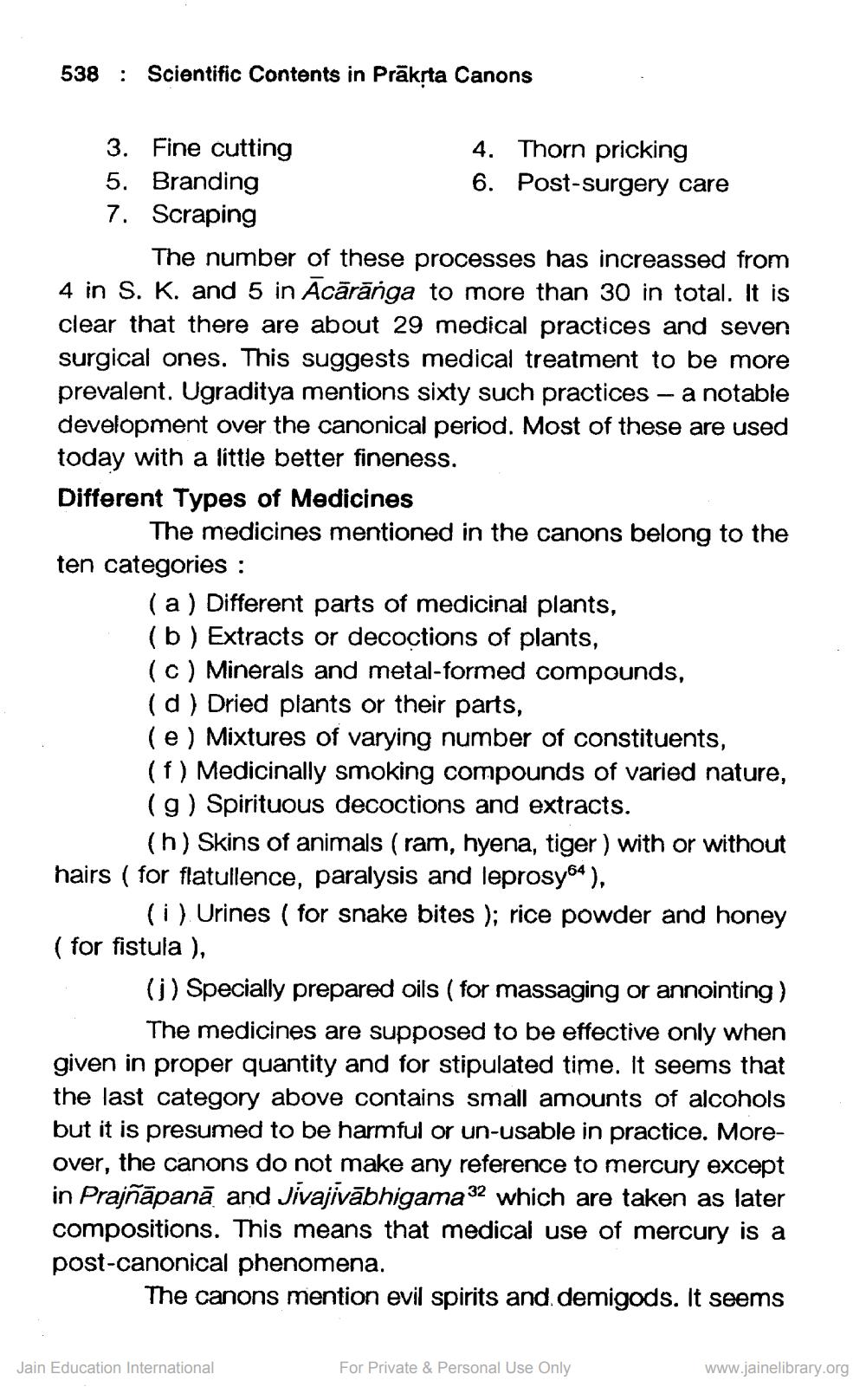________________
538 : Scientific Contents in Prāksta Canons
3. Fine cutting
4. Thorn pricking 5. Branding
6. Post-surgery care 7. Scraping
The number of these processes has increassed from 4 in S. K. and 5 in Acārānga to more than 30 in total. It is clear that there are about 29 medical practices and seven surgical ones. This suggests medical treatment to be more prevalent. Ugraditya mentions sixty such practices - a notable development over the canonical period. Most of these are used today with a little better fineness. Different Types of Medicines
The medicines mentioned in the canons belong to the ten categories :
(a) Different parts of medicinal plants, (b ) Extracts or decoctions of plants, (c) Minerals and metal-formed compounds, (d) Dried plants or their parts, (e) Mixtures of varying number of constituents, (f) Medicinally smoking compounds of varied nature, (g) Spirituous decoctions and extracts.
(h) Skins of animals (ram, hyena, tiger ) with or without hairs ( for flatullence, paralysis and leprosy64),
(i) Urines ( for snake bites ); rice powder and honey ( for fistula ),
(j) Specially prepared oils ( for massaging or annointing)
The medicines are supposed to be effective only when given in proper quantity and for stipulated time. It seems that the last category above contains small amounts of alcohols but it is presumed to be harmful or un-usable in practice. Moreover, the canons do not make any reference to mercury except in Prajñāpanā and Jivajivābhigama 32 which are taken as later compositions. This means that medical use of mercury is a post-canonical phenomena.
The canons mention evil spirits and demigods. It seems
Jain Education International
For Private & Personal Use Only
www.jainelibrary.org




